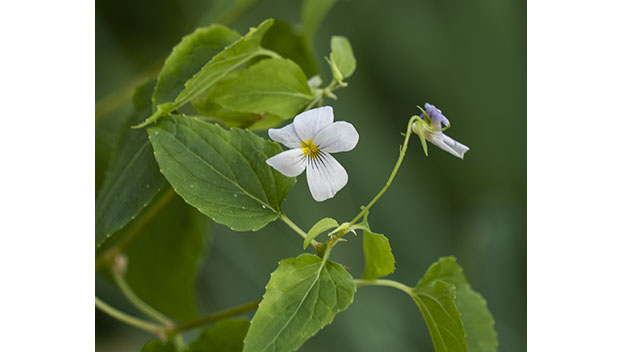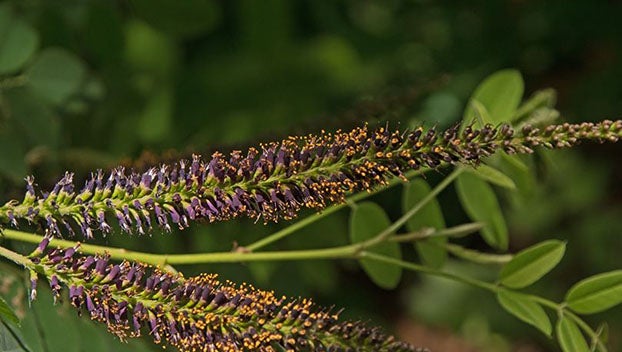Mother Nature’s Garden: Let’s talk about serendipity & cream violet
Published 2:05 pm Friday, June 23, 2023

- The cream violet or Canada violet has a yellow throat and no beards.
|
Getting your Trinity Audio player ready...
|
There’s a certain amount of serendipity involved in taking people to see wildflowers. You just never know whether the plants you saw four days earlier will still be there. Once in a while, however, you get lucky. Like this case of cream violet.
Late last month I took the new Master Naturalists on a short hike at Holliday Lake State Park. It was a chance to talk about what had been discussed in class and to see some interesting spring blooms. The weather was excellent, not too hot and not too cold, and there was still an amazing number of spring blooms everywhere. We started by the edge of the lake where we found a large patch of cream or striped violets (Viola striata). In fact, the most I’ve ever seen in one location.
The cream violet looks somewhat like the Canada violet (Viola canadensis), so, not surprisingly, someone in the group asked whether our find was actually a Canada violet. Sometimes plant identification is all about the details, and this was one of those times.
The two violets look very similar at first glance. Both are relatively tall and have whitish blooms with purple stripes. Blooms of the Canada violet, however, have a patch of yellow in the throat, and the reverse side of the petals has a purplish tinge. The small stipules (tiny leaf-life outgrowths typically found at the base of leaf petioles) have smooth edges, and the plants are very tall and leggy – 8 to 14 inches tall. The Canada violet is fragrant.
The cream or striped violet has fine white hairs or beards on the two lower lateral petals, and the lower petals have purple stripes, hence the common name striped violet. The stipules are larger and have narrow, fringe-like teeth. This plant isn’t quite as tall as the Canada violet and isn’t fragrant. The cream violet is common in our area, while the Canada violet is uncommon here but frequently found in the mountains.

False-indigo bush has showy inflorescences.
What else did we find? Three species of native orchids, fringe trees, heartleaf, wild ginger, and so much more, including lots of false indigo-bush (Amorpha fruticosa) in a new location along the edge of the lake. It’s found in scattered locations throughout the Piedmont and Coastal Plain, but isn’t common, so this was an exciting find.
False-indigo bush is a deciduous shrub that grows 4 to 12 feet tall and tends to form thickets in wet areas. It has dull, grayish-green leaflets with pointy tips and long spikes of tiny, dark purple blooms with protruding stamens topped with showy orange anthers. Yes, this plant contains small amounts of indigo pigment, just not enough to be useful.
You never know what you’ll find when roaming in the woods and that’s part of the fun – exploration and discovery.
Dr. Cynthia Wood is a master gardener who writes two columns for The Herald. Her email address is cynthia.crewe23930@gmail.com.




